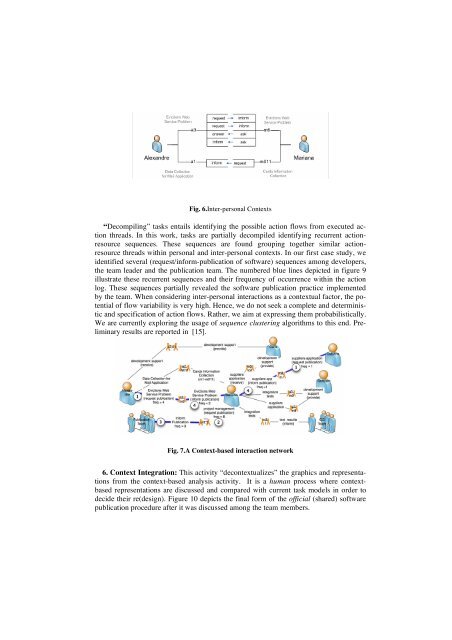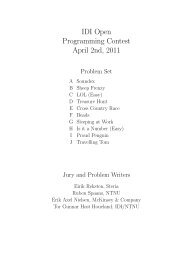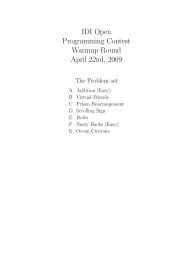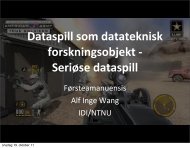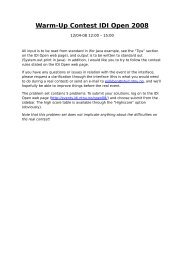Reverse-engineering of individual and inter-personal work practices
Reverse-engineering of individual and inter-personal work practices
Reverse-engineering of individual and inter-personal work practices
- No tags were found...
You also want an ePaper? Increase the reach of your titles
YUMPU automatically turns print PDFs into web optimized ePapers that Google loves.
Fig. 6.Inter-<strong>personal</strong> Contexts“Decompiling” tasks entails identifying the possible action flows from executed actionthreads. In this <strong>work</strong>, tasks are partially decompiled identifying recurrent actionresourcesequences. These sequences are found grouping together similar actionresourcethreads within <strong>personal</strong> <strong>and</strong> <strong>inter</strong>-<strong>personal</strong> contexts. In our first case study, weidentified several (request/inform-publication <strong>of</strong> s<strong>of</strong>tware) sequences among developers,the team leader <strong>and</strong> the publication team. The numbered blue lines depicted in figure 9illustrate these recurrent sequences <strong>and</strong> their frequency <strong>of</strong> occurrence within the actionlog. These sequences partially revealed the s<strong>of</strong>tware publication practice implementedby the team. When considering <strong>inter</strong>-<strong>personal</strong> <strong>inter</strong>actions as a contextual factor, the potential<strong>of</strong> flow variability is very high. Hence, we do not seek a complete <strong>and</strong> deterministic<strong>and</strong> specification <strong>of</strong> action flows. Rather, we aim at expressing them probabilistically.We are currently exploring the usage <strong>of</strong> sequence clustering algorithms to this end. Preliminaryresults are reported in [15].Fig. 7.A Context-based <strong>inter</strong>action net<strong>work</strong>6. Context Integration: This activity “decontextualizes” the graphics <strong>and</strong> representationsfrom the context-based analysis activity. It is a human process where contextbasedrepresentations are discussed <strong>and</strong> compared with current task models in order todecide their re(design). Figure 10 depicts the final form <strong>of</strong> the <strong>of</strong>ficial (shared) s<strong>of</strong>twarepublication procedure after it was discussed among the team members.


